Using a mere twelve grams of lunar soil returned by the Apollo missions, scientists have successfully grown plants in the lab. With a wealth of genetic data on hand, they can now analyze the changes to the plants and the soil. Plus, stellar cannibalism, a black hole merger, brown dwarfs, water on Mars, and a review of Star Trek: Strange New Worlds.
Podcast
Show Notes
A new color observed in classic nova
- FAU press release
- “X-ray detection of a nova in the fireball phase,” Ole König et al., 2022 May 11, Nature
Eclipsing shadows in black hole merger
- Columbia University press release
- “Self-Lensing Flares from Black Hole Binaries: Observing Black Hole Shadows via Light Curve Tomography,” Jordy Davelaar and Zoltán Haiman, 2022 May 9, Physical Review Letters
- “Self-lensing flares from black hole binaries: General-relativistic ray tracing of black hole binaries,” Jordy Davelaar and Zoltán Haiman, 2022 May 9, Physical Review D
New brown dwarf stars found with companions
- European astronomers discover four new brown dwarfs (Phys.org)
- “Results from The COPAINS Pilot Survey: Four new brown dwarfs and a high companion detection rate for accelerating stars,” M Bonavita et al., 2022 May 10, Monthly Notices of the Royal Astronomical Society
Chinese rover discovers more evidence for water on Mars
- Chinese rover finds evidence that water was present on Mars more recently than thought (Phys.org)
- “Zhurong reveals recent aqueous activities in Utopia Planitia, Mars,” Yang Liu et al., 2022 May 11, Science Advances
Earth analog for Martian subsurface contains life
- A Recent Discovery Could Unravel the Mystery of Martian Methane (Dirk Schulze-Makuch)
- “Active lithoautotrophic and methane-oxidizing microbial community in an anoxic, sub-zero, and hypersaline High Arctic spring,” Elisse Magnuson et al., 2022 April 8, The ISME Journal
Plants successfully grown in lunar soil
- University of Florida press release
- “Plants grown in Apollo lunar regolith present stress-associated transcriptomes that inform prospects for lunar exploration,” Anna-Lisa Paul, Stephen M. Elardo and Robert Ferl, 2022 May 12, Communications Biology
Transcript
I feel like we need to warn the audience that today’s show involves cannibalism.
It’s just stellar cannibalism. Stars eat stars all the time.
And black holes casting shade on each other.
But they’re just orbiting. It’s what black holes do. They cast shade.
The universe is kinda rude.
Yes, yes it is, but it also made us, so…
So I’m going to focus on the good stuff like plants — plants grown in lunar dirt. And water on Mars, and even how Mars-like soil fosters life.
And I’ll focus on the things that like to explode for science, and Beth will also review Strange New Worlds, right here on the Daily Space.
I am your host Dr. Pamela Gay.
And I am your host Erik Madaus.
And we’re here to put science in your brain.
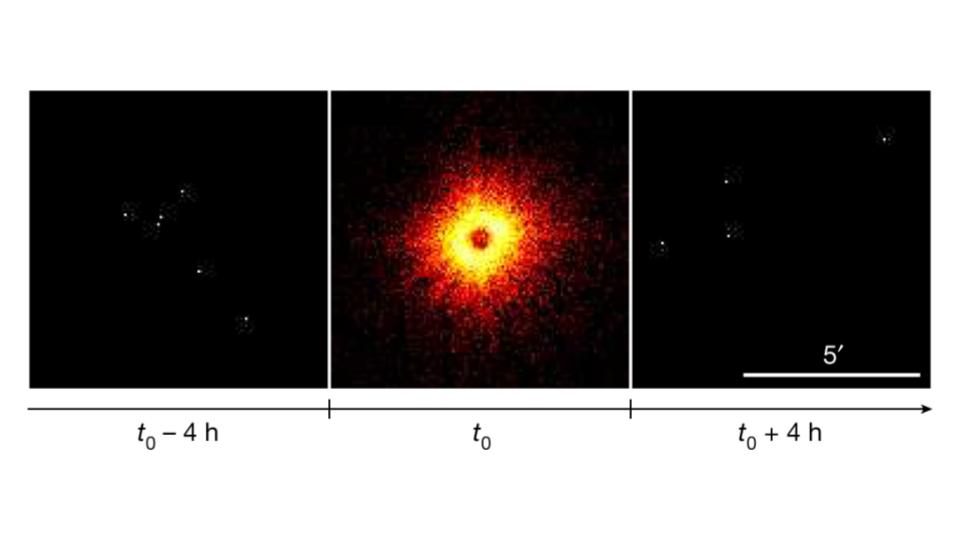
One of the recurring themes in this show – and in the universe – is stellar cannibalism. As we’ve said before, it is a star-eat-star world out there. Exactly what happens when one star gravitationally pulls material off its companion depends on the mass of the cannibal. If it is a black hole, we get an amazing light show as material works its way past the event horizon.
On the other end of the mass spread, a hungry white dwarf can carry that extra mass in a lot of different ways. If it feeds just right, it will slowly add weight, building up its bulk over time, until one day it explodes as a type 1a supernova.
Other stars, with a different feeding pattern, will build up material on their surface, crushing it in place, until one day that surface material gets dense enough that it goes off in a layer of thermonuclear reactions. This kind of surface explosion can occur over and over as a white dwarf repeatedly flares up in what is called a classical nova.
Classical novae are a favorite target for amateur astronomers who will monitor their favorites and report their flare-ups to organizations like the American Association of Variable Star Observers (AAVSO). This ‘have they / haven’t they gone’ flare is one of the scientifically frustrating and observationally fun characteristics of these unpredictable stars.
And it was entirely by accident that researchers happened to be pointing the eROSITA instrument on the Spectrum-Roentgen-Gamma mission at a classical nova a few hours before it flared into visible brightness. At that random moment, researchers caught the white dwarf shining brightly in X-rays. A few hours earlier, this area of the sky was boring. A few hours later, boring again… in X-ray. As I said, it had a visible nova event. It had long been theorized that in the leadup to the nova event, X-ray light might be released as reactions begin, but this light is only released briefly and had never before been seen.
This work is published in Nature in a paper led by Ole König, who explains that this observation: …was to some extent a fortunate coincidence, really. These X-ray flashes last only a few hours and are almost impossible to predict, and the observational instrument must be pointed directly at the explosion at exactly the right time. …We were really lucky.
I love this result. There was a theory. We couldn’t confirm it without getting super lucky, but one day the universe decided, “You know, these folks deserve some good data.” And provided us with exactly what was needed to say, “Yes, we are on the right track to understanding these cannibal stars that like to explode the material they eat.”
A surprising amount of science comes from just getting lucky with your telescope.

In a pair of papers, this time in Physical Review Lettersand Physical Review D, researchers led by Jordy Davelaar describe a strange object found by its changing light using the Kepler space telescope. Designed to look for the tiny dips in starlight that are seen when a planet orbits its star and blocks the star’s light, Kepler was the perfect tool for finding all kinds of things that flicker and flare in the sky.
One particular object was spotted getting brighter, dipping slightly, going back to bright, and then fading away. In a delightful case of excellent naming, the researchers dubbed this object ‘Spiky’ because a plot of the object’s light over time appears to spike.
Through detailed analysis, they figured out that they were watching a pair of massive black holes orbiting one another and taking turns using their gravity to magnify the light and the darkness of the object behind them. As the Event Horizon Telescope
(EHT) team highlighted so well this week, the region of black holes has a donut of light surrounding the shadow of the black hole’s dark event horizon. It was that shadow that was causing the dip during the eclipse. Paper co-author Zoltan Haiman explains: That dark spot tells us about the size of the black hole, the shape of the space-time around it, and how matter falls into the black hole near its horizon.
While projects like the Event Horizon Telescope can only see the nearest supermassive black holes and resolve their light and shadow, this technique can be used to study any system with two black holes aligned so that they appear to eclipse one another as they orbit. While there aren’t going to be a high percentage of systems that meet both criteria, the universe is vast. As Davelaar explains: Even if only a tiny fraction of these black hole binaries has the right conditions to measure our proposed effect, we could find many of these black hole dips.
Kepler was an amazing mission, and I’m not sure when new science will stop coming out of its data.
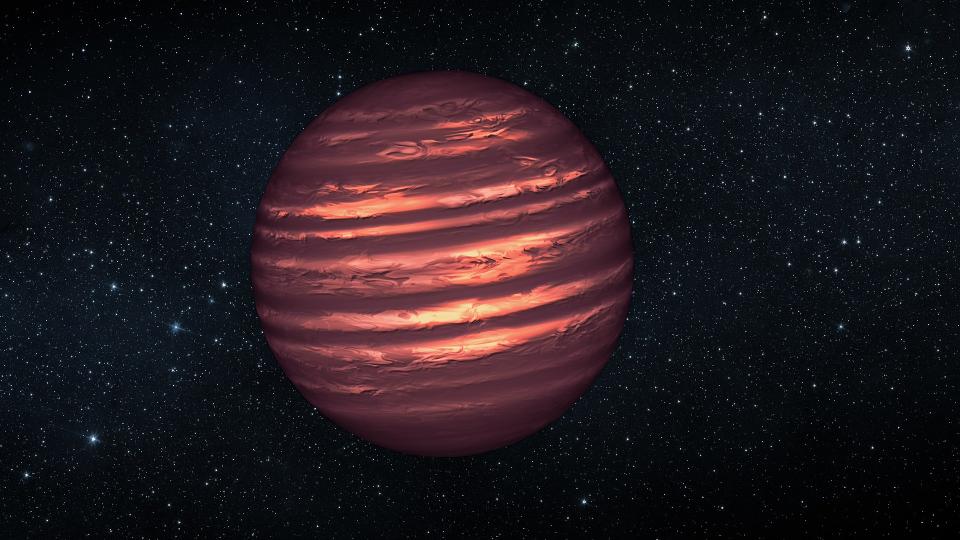
Not all astronomers do their research by saying, “And now I shall point a telescope at this object I love and learn new things about it.” The reality is that most of us sit at our keyboard, study the structure of catalogs of data already acquired, and write commands to pull potentially interesting science out of that existing data. In some cases, people can combine catalogs in creative ways to find things that no one data set can show on its own, and with follow-up observations say, “Hey – look! Something new.”
This kind of data repurposing led to the latest discovery of four new brown dwarf stars. These tiny masses are just big enough to briefly undergo nuclear reactions of heavy hydrogen, like tritium and deuterium, but they lack the needed mass to support prolonged regular hydrogen burning. Because they are small and dark, finding them is a challenge, but researchers performing the COPAINS pilot survey found a trick to success.
They looked for stars that were cataloged as having different motions across the sky by different catalogs. They rightly figured these objects might be in binary systems, and the varying motions were seen because the stars are both moving due to their orbit in the galaxy and their orbit around a companion. All these brown dwarfs were found orbiting young stars with Sun-like masses.
All told, after looking at 25 stars, they had found ten companion objects, including these four brown dwarfs, and the team notes: The high detection rate obtained here strongly validates the use of such approaches in survey designs.
So when different catalogs don’t match, don’t ask, “What went wrong?” Ask “what science is waiting to be done?”
From surveying the stars let’s now move into surveying the planets. Up next, Erik brings us a bit of the red planet.
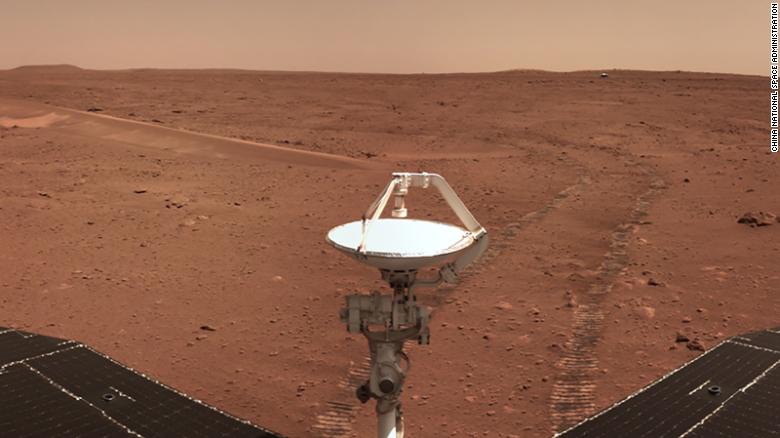
It seems like every year or so, one team or another announces more evidence about water on Mars. This time it’s the Chinese, with their Zhurong rover. They now think that Mars had water far later than currently believed.
Mars once had lots of water, but at some point, about three billion years ago, it all dried up. The current period – the dry period – is called the Amazonian Epoch.
The new discovery is essentially some hydrated minerals — minerals that could have only been made in the presence of water. The team also found a material called duricrust, made in the presence of large amounts of water. According to the paper published in Science Advances, the number of hydrated minerals found by the rover’s two spectrometers could have only come from water being present for a long time.
It’s even possible that there is still subsurface water on Mars.
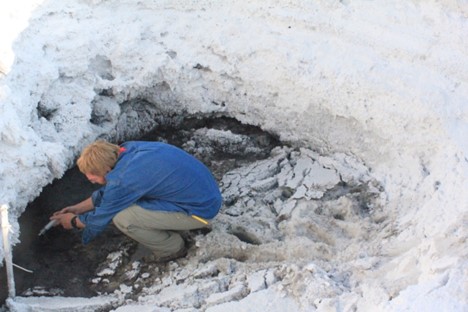
Researchers from McGill University working in the high Arctic region of Canada have discovered a spring that hosts a thriving microbial community. The Lost Hammer Spring is a fantastic Earth analog for Mars’s deep surface, with water temperatures around -50 degrees Celsius but a salinity of around 24%. That salinity keeps the water liquid, something we think is possible on Mars as well.
The water is also oxygen-poor, as it has to go through 600 meters of permafrost to reach the surface. This composition means that the microbes are predominantly sulfur-oxidizing bacteria and methane-oxidizing archaea. That’s exciting because we keep detecting methane on Mars using orbiting spacecraft, the Curiosity rover, and even some ground-based telescopes here on Earth. But we haven’t determined where the methane is coming from.
Methane is easily destroyed by sunlight, which breaks the molecules into constituent elements, basically, so there has to be some sort of renewal process at this point in the planet’s lifespan. One of the possibilities being considered is that there is subsurface microbial life on Mars producing methane, and with this analog, we have located a community that adds some probability to the possibility.
Even if this research doesn’t lead to the discovery of life on Mars, finding a new extremophile community continues to push the limits of where life can be found.
This work was published in Nature and led by Elisse Magnuson.
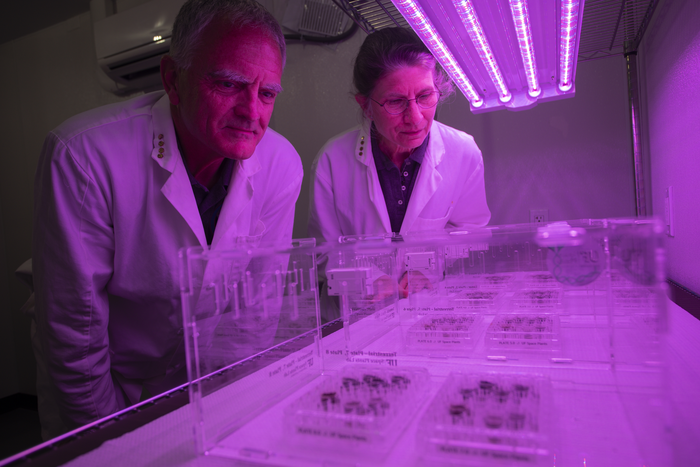
Along with the Martian subsurface, researchers continue to try and figure out how life could work on the Moon. Obviously, we’re not talking about a place where there was once liquid water that could have seeped underground and possibly sustained microbes. But when we talk about building a lunar base, we need to think about becoming self-sustaining, and that means being able to grow our own plants.
And now, scientists have successfully grown plants using just twelve grams of lunar soil.
It turns out that we don’t have a lot of lunar samples on hand, and what we have gets divvied out very carefully, so twelve grams is all the team got. They used it to their advantage, however, by creating single-gram, thimble-sized planters. Each planter got some nutrient solution and a few seeds of a plant called Arabidopsis. The genetic code for this particular plant has been completely mapped out, so the scientists could examine the results down to the expression in the genetic makeup.
Almost all of the twelve tiny pots sprouted plants.
As a control, the same seeds were planted in a terrestrial soil called JSC-1A, which mimics lunar soil. At first, both sets of plants seemed to be growing in similar ways, but as time went on, the actual lunar soil plants appeared to be struggling under the stress of the soil conditions. They grew more slowly or were smaller or just varied widely in size compared to the control group. Co-author Anna-Lisa Paul explains: At the genetic level, the plants were pulling out the tools typically used to cope with stressors, such as salt and metals or oxidative stress, so we can infer that the plants perceive the lunar soil environment as stressful.
There also turned out to be a difference in growth between two different types of lunar soil. Plants in more mature soil – that which has been exposed to more cosmic radiation – struggled more than plants grown in the less mature soils. That’s another issue to take into consideration when planning a location for a lunar base.
On top of everything, the plants may be changing the soil themselves, so the team plans to study the effects on that end of the experiment.
But, hey, we grew plants in lunar soil. Pretty exciting stuff.
Coming up next, Beth reviews the very first episode of Paramount’s new Star Trek series, Strange New Worlds.
Review

Last week, Pamela asked the team if anyone was into Star Trek and would someone want to review the latest Trek series. I jumped at the chance. I wasn’t the co-host of Grudge Report for nothing, after all.
I am definitely a Trekkie. I’ll lay out a few of my credentials here, since some people may ask. I grew up with a dad whose Air Force call sign was “Spock” because of how much he was like Mr. Spock on The Original Series. In high school, my friends called me Spock’s daughter. Then from my junior year until I moved to Los Angeles, I attended two Star Trek conventions a year. In fact, the last thing I did before moving was attended a Star Trek convention. I’ve worn a uniform. I’ve met so many cast members.
Yes, I am a Trekkie.
And I have been incredibly excited for this new series. I’ve enjoyed Discovery, and I’m still catching up on Lower Decks and Picard, but I get to jump in on Strange New Worlds from the beginning, and let me tell you, I am hooked.
The first episode takes place after the events of Discovery’s season two finale. You don’t have to have seen Discovery, but it will help set the stage. The show will fill you in, though, on the relevant bits if you don’t want to go back. Captain Pike, played by the rather dreamy Anson Mount, is avoiding going back to the Enterprise. Did I mention that the end of Discovery season two was a bit traumatic for everyone involved? Well, it was, and he is not sure he can go back to being a starship captain.
But Starfleet is not to be deterred, and they basically suck him back in with a rescue mission of his first officer, who does not handle vacation time well, apparently, and has disappeared while on what was supposed to be a routine first contact mission.
First contact is just what it sounds like – the first time a civilization has contact with an alien. In the Federation, it happens after the signature of a warp drive is detected, meaning that the civilization is advanced enough to have developed the capability to travel far in space. As a caveat to first contact, there is also General Directive 1, which is basically a rule that the Federation does not interfere with societies that are currently in a pre-warp drive technological state.
I’ll avoid spoiling the plot. There is some interesting science in this show that deals with warp signatures and such, which I’m sure our friend Dr. Erin McDonald can explain better than I can. As a scientist, I loved the talk of genetic manipulation and technological advancement. As a Trekkie, I adored all the little shoutouts to previous shows and events. Easter eggs abound, and the new actors playing old favorites are fun, especially Uhuru and Chapel. Basically, every name in this show has weight, even the shuttlecraft.
Plus, the costumes are less mini-skirt and more jumpsuits, and that’s fine. Not everything has to mimic the 1960s.
I feel like a lot of this show review could have been done with some memes I have seen since the premier. There’s a great one where it’s “I watch Strange New Worlds for the plot” where the plot is a picture of a shirtless Spock. Thank goodness I am not actually Spock’s daughter.
There’s already another episode out this week, and so there is a strong possibility that after taping this review, I’m going to go watch it. It really was a strong start, and it already feels like it’s found its voice from the beginning, which is probably an advantage of starting during Discovery. However, I do worry that Strange New Worlds will suffer from a similar problem as Discovery in that it’s already burdened with existing canon. But so far, so good.
I hope you go check it out.
This has been the Daily Space.
You can find more information on all our stories, including images, at DailySpace.org. As always, we’re here thanks to the donations of people like you. If you like our content, please consider joining our Patreon at Patreon.com/CosmoQuestX.
Credits
Written by Pamela Gay, Beth Johnson, Erik Madaus, and Gordon Dewis
Hosted by Pamela Gay, Beth Johnson, and Erik Madaus
Audio and Video Editing by Ally Pelphrey
Content Editing by Beth Johnson
Intro and Outro music by Kevin MacLeod, https://incompetech.com/music/


 We record most shows live, on Twitch. Follow us today to get alerts when we go live.
We record most shows live, on Twitch. Follow us today to get alerts when we go live.